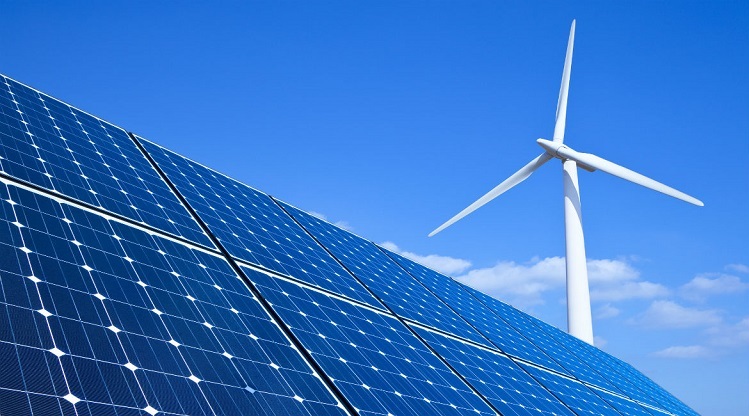Development Objectives in Power Plan VIII in Vietnam
The Prime Minister issued Decision 500/QD-TTg dated May 15, 2023, in which the national electricity development goals for the period of 2021 - 2030, with a vision to 2050, were set out.

Development Objectives in Power Plan VIII in Vietnam (Internet image)
On May 15, 2023, the Prime Minister of Vietnam issued Decision 500/QD-TTg approving the national electricity development master plan for the period of 2021 - 2030, with a vision to 2050 (referred to as Power Plan VIII).
According to Decision 500/QD-TTg, the Prime Minister of Vietnam has set the following development goals:
General objectives in Power Plan VIII in Vietnam
The overall objectives in Power Plan VIII include:
- Firmly ensuring national energy security, meeting the requirements of socio-economic development, industrialization, and modernization of the country.
- Successfully implementing equitable energy transitions associated with production modernization; building smart grids, and advanced power system management in line with the trend of green transformation, emission reduction, and scientific and technological development around the world.
- Forming an overall energy industry ecosystem based on renewable energy, new energy.
Specific objectives in Power Plan VIII in Vietnam
According to Decision 500/QD-TTg, the Prime Minister of Vietnam has set specific objectives in Power Master Plan VIII as follows:
- Regarding national energy security assurance:
+ Supplying enough electricity in the country, meeting socio-economic development goals with an average GDP growth rate of about 7%/year in the period of 2021–2030, and about 6.5–7.5%/year in the period of 2031–2050:
(i) Commercial electricity: about 335.0 billion kWh by 2025; by 2030, about 505.2 billion kWh; by 2050, about 1,114.1–1,254.6 billion kWh.
(ii) Electricity production and import: By 2025, about 378.3 billion kWh; by 2030, about 567.0 billion kWh; by 2050, about 1,224.3–1,378.7 billion kWh.
(iii) Maximum capacity: about 59,318 MW in 2025; by 2030, about 90,512 MW; by 2050, about 185,187–208,555 MW.
+ Ensuring safe and reliable power supply, meeting criteria N-1 for important load areas and N-2 for particularly important load areas. By 2030, the reliability of electricity supply will be in the group of 4 leading countries in ASEAN, and the electricity access index will be in the group of 3 leading countries in ASEAN.
+ Striving to have 50% of office buildings and 50% of residential houses by 2030 using self-produced and self-dissipating rooftop solar power (for on-site consumption, not selling electricity into the national electricity system).
- Regarding fair energy conversion:
+ Strongly developing renewable energy sources for electricity production, reaching a ratio of about 30.9–39.2% by 2030, towards the target of a renewable energy ratio of 47% provided the commitments According to the Political Declaration establishing the Equitable Energy Transition Partnership (JETP) with Vietnam, which has been fully and substantively implemented by international partners. Orientation to 2050: renewable energy rate up to 67.5–71.5%.
+ Controlling greenhouse gas emissions from electricity production to reach about 204–254 million tons in 2030 and about 27–31 million tons in 2050. Aim to reach peak emissions of no more than 170 million tons by 2030, provided that commitments under the JETP are fully and substantively implemented by international partners.
+ Building a smart grid system, capable of integrating and safely operating large-scale renewable energy sources.
- Regarding the development of the industrial ecosystem and renewable energy services:
+ It is expected that by 2030, there will be two inter-regional renewable energy industrial and service centers, including those for electricity production, transmission, and consumption; the renewable energy equipment manufacturing industry; construction, installation, and related services; and the building of an ecosystem for the renewable energy industry in areas with great potential, such as the North, the South Central, and the South, when there are favorable conditions.
+ Developing power sources from renewable energy and produce new energy for export. By 2030, the scale of electricity export capacity will reach about 5,000–10,000 MW.
More details can be found in Decision 500/QD-TTg effective from the date of signing and promulgation.
- Key word:
- Power Plan VIII in Vietnam
- Number of deputy directors of departments in Vietnam in accordance with Decree 45/2025/ND-CP
- Cases ineligible for pardon in Vietnam in 2025
- Decree 50/2025 amending Decree 151/2017 on the management of public assets in Vietnam
- Circular 07/2025 amending Circular 02/2022 on the Law on Environmental Protection in Vietnam
- Adjustment to the organizational structure of the Ministry of Health of Vietnam: Certain agencies are no longer listed in the organizational structure
- Vietnam aims to welcome 22-23 million international tourists in Vietnam in 2025
-

- Notable new policies of Vietnam effective as of ...
- 16:26, 11/04/2025
-
.Medium.png)
- Notable documents of Vietnam in the previous week ...
- 16:21, 11/04/2025
-
.Medium.png)
- Notable documents of Vietnam in the previous week ...
- 16:11, 02/04/2025
-
.Medium.png)
- Notable new policies of Vietnam to be effective ...
- 16:04, 02/04/2025
-
.Medium.png)
- Notable new policies of Vietnam effective from ...
- 14:51, 21/03/2025
 (1).png)
 Article table of contents
Article table of contents
